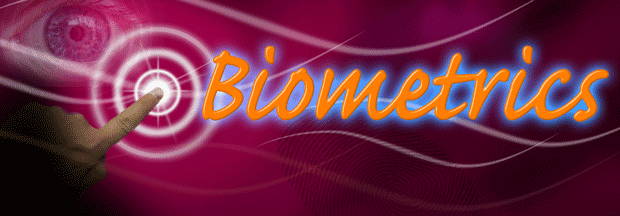
“Biometrics” is the umbrella term for identifying people based on the uniqueness of every human body. No two fingerprints are alike, no two retinas are alike, or glances, or faces, or even heartbeats. A combination of a Greek prefix (“bio,” connected with life and living things) and a Greek word (metron, meaning “measure”), biometrics are everywhere these days, poised to replace passwords to secure data.
Fingerprinting is the oldest form of biometrics. The ancient Babylonians (1792-1750 B.C.) and Chinese (300 A.D.) took fingerprints, and by 650, the Chinese historian Kia Kung-Yen remarked that fingerprints could be used as a means of authentication. The Persian government (modern day Iran) may have used thumbprints to authenticate documents in the 13th century. The Persian physician Rashid-al-Din Hamadani (1247–1318) refers to the Chinese practice of identifying people via their fingerprints, commenting: “Experience shows that no two individuals have fingers exactly alike.” In Persia at this time, government documents may have been authenticated with thumbprints. Fast forward to the 19th century and police forces on both sides of the Atlantic Ocean began using fingerprints in earnest for investigating crimes.
Thanks to advances in sensor technology, today researchers are investigating the use of fingerprints as an alternative to passwords for accessing touchscreen-equipped computers. As reported on electronicproducts.com, “Current touch displays cannot scan fingerprints and fingerprint sensors cannot display images, but according to researchers Christian Holz and Patrick Baudisch of the Hasso Plattner Institute in Germany, what they invented does both.”

Future coffee shops may be equipped with interactive touchscreen tabletops. (Image via New Scientist.)
Holz and Baudisch created their prototype, which is about the size of a large tablet, by using a glass screen made entirely of millions of 3-millimeter-long optical fibers bundled together into a single flat platter. Each fiber emits rays of visible light from an image projector below the glass, and an infrared light source alongside the projector bounces off the fingerprints and back to an infrared camera.
Retina scanning is another means of biometric identification. First conceived of in 1935, research into retina scanning began in earnest in the 1970s. As Mark Schultz of Cypress Semiconductor observed in Electronic Products in 2006, “Biometric security offers an economical solution that does not add significant user burdens such as extra passwords or additional log-in steps. Possible methods include fingerprint sensing, retina and iris scanning, signature analysis, and hand geometry.”
Eye and face recognition are being studied as alternatives to computer passwords. As an alternative to constantly resetting and losing passwords, University of Washington engineers are working on bringing eye and face recognition to mainstream password-retrieval websites. This biometric authentication process is more accurate and efficient than writing down a list of passwords. The dot-locating method scored well because of the short time it took to recognize the user.
And finally, and probably not finally, the human heartbeat is being studied as a unique means of identification. A fitness watch is available to monitor your heart rate. The Nymi wristband takes such monitoring a step further: It aims to replace all passwords and keys. As Natasha Lomas explains on techcrunch.com, “The wristband relies on authenticating identity by matching the overall shape of the user’s heartwave (captured via an electrocardiogram sensor). Unlike other biotech authentication methods — like fingerprint scanning and iris-/facial-recognition tech — the system doesn’t require the user to authenticate every time they want to unlock something. Because it’s a wearable device, the system sustains authentication so long as the wearer keeps the wristband on.”
Watch the video to see the extent of Nymi’s aim to replace all passwords and keys:
Advertisement
Learn more about Electronic Products Magazine





